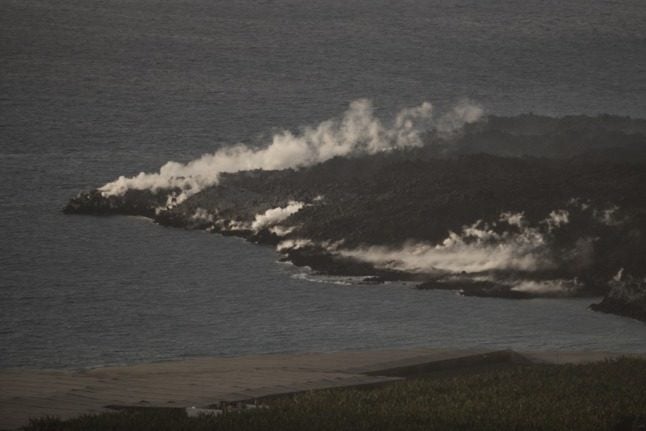Stockholm-Arlanda Airport was eventually closed for air traffic from 9pm on Tuesday, following on the heels of the city’s smaller Bromma Airport which shut at 3pm as a cloud of volcanic ash drifted back in over the capital.
“We got three decisions within a half hour,” said Susanne Rundström at Arlanda operator Swedavia after some confusion over when the airport would close.
Airspace in the far south of Sweden and Denmark was opened overnight, and from 11am Finnish airspace will open. Britain started to allow some flights from Tuesday evening but chaos remained in the UK.
Malmö airport is expected to remain open until Wednesday morning.
According to the Civil Aviation Authority (Luftfartsverket – LFV) the situation remained the same at 6.15am as southern Iceland’s Eyjafjallajökull volcano continued to emit ash.
Karlstad Airport in western Sweden is also likely to remain closed as the cloud of volcanic ash continued to drift in over southern Sweden on Tuesday evening.
All air traffic from Bromma was rerouted to Arlanda until 8pm.
LFV is at pains to explain the dangers of flying through the cloud of ash as airlines continued to criticise the actions of European aviation authorities.
Scientists say that Eyjafjallajökull is starting to produce more lava, and the plume of ash is shrinking, while it remains changeable.
“We have a series of indications that the activity is declining. We have less ash and there seems to be less activity in the crater,” said Rögnvaldur Olafsson at Iceland’s civil defence to the Reuters news agency on Tuesday.
“We have to be careful with our words, but researchers are at least saying that activity is declining. We can not conclude that the worst is over, but we hope so,” he said.
The prognosis for Wednesday remained uncertain with the UK Met Office forecasting that the ash cloud would cover most of Sweden on Wednesday.
“Large parts of southern Sweden will be covered by the ash cloud, with the exception of Skåne and parts of the southern Baltic Sea,” said Stina Sjöström at the Swedish meteorological agency, SMHI.
While Monday’s forecast by the European Organisation for the Safety of Air Navigation, Eurocontrol, that normality would return to Europe’s skies by Thursday, looks increasingly in doubt more flights did however take place in Europe on Tuesday. Around half of the planned flights were completed, in comparison to 20 percent on Sunday.
By the end of Tuesday 95,000 flights had been cancelled since the problems emerged last Thursday.



 Please whitelist us to continue reading.
Please whitelist us to continue reading.
Member comments